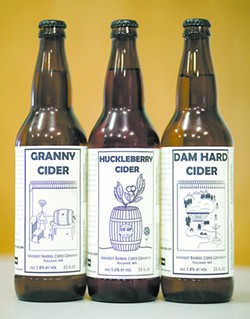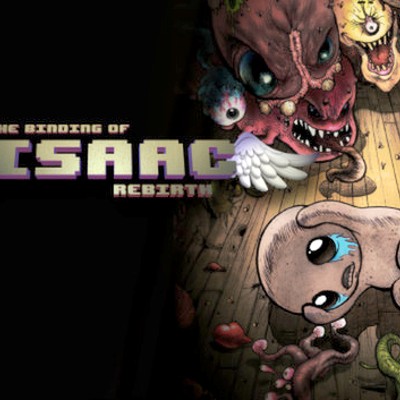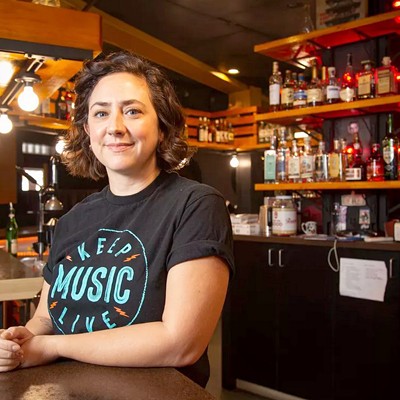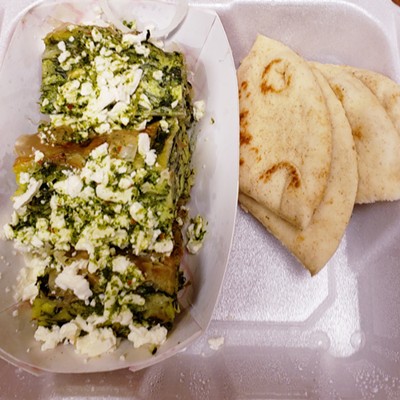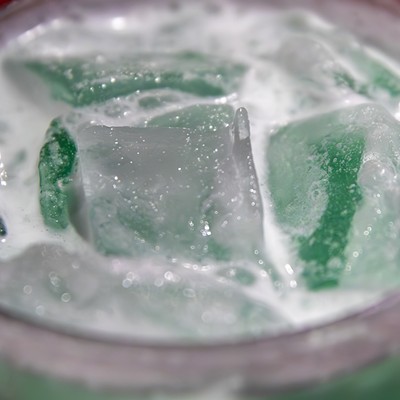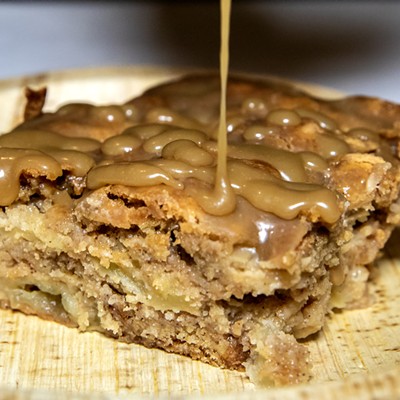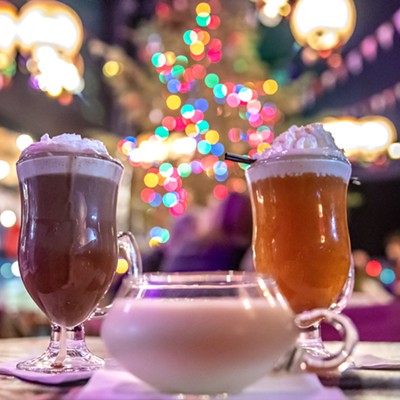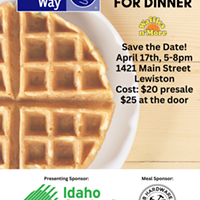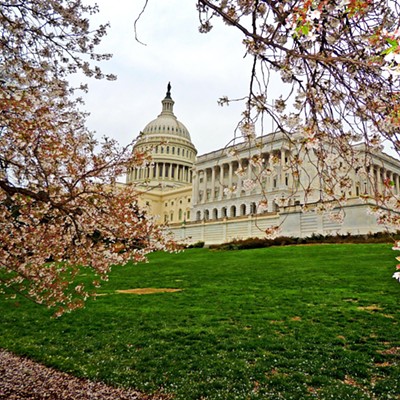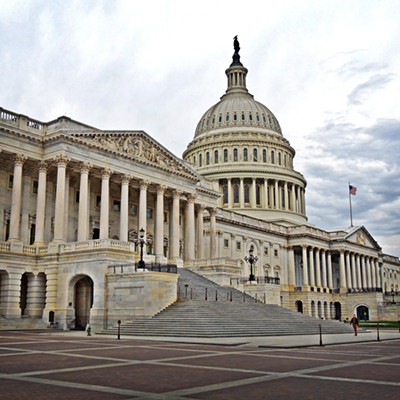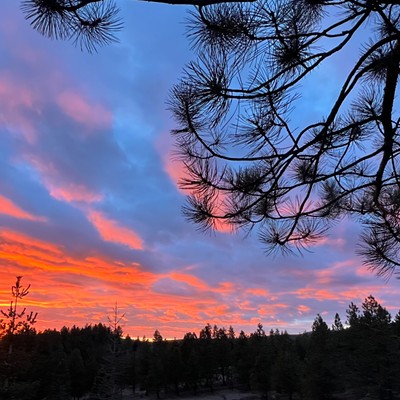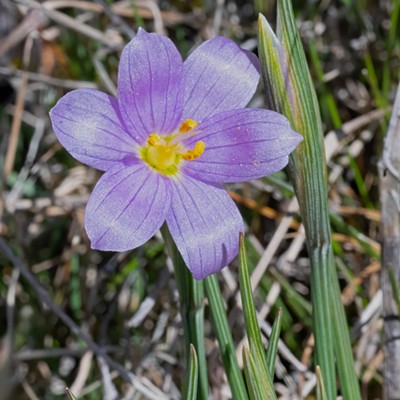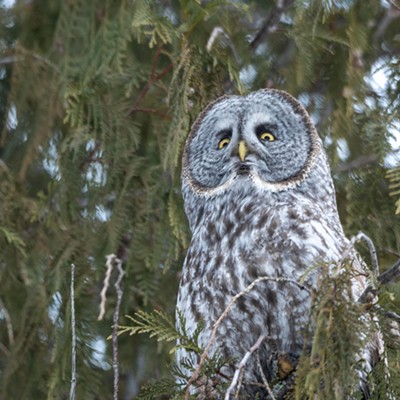PULLMAN — In an industrial building near the Pullman-Moscow Regional Airport, 32-year-old Trent Maier is brewing the next chapter in the history of American cider.
Maier is the cider master and owner of the Whiskey Barrel Cider Company, one of a growing number of artisan cideries in the Pacific Northwest. While hard cider has a long history in the U.S. it was nearly extinct for 150 years. Now fortunes are turning for the alcoholic beverage as locavores, foodies and others seek out new experiences.
“My goal is to make palatable, drinkable ciders,” says Maier, a bearded former electrical engineer dressed in jeans, a flannel shirt and green suspenders. “The apple and the fruit we use is always our shining star.”
From tree to glass
Maier’s cider begins at a farm in Orondo, Wash., where he buys a variety of dessert apples that are juiced on site.
Traditional cider makers might frown upon the use of dessert apples for cider, Maier says, but he disagrees. He wanted to use fruit widely available in Washington, which produces 10 billion to 12 billion apples a year.
“A lot of people try to mimic what Europe has done,” he says. “Our concept is American-style ciders.”
It’s similar to the direction craft brewers have taken the beer industry, he notes.
Back in Pullman, he adds yeast to the juice and the fermenting process begins in the building’s cool confines. Yeast eats the sugars and creates carbon dioxide and alcohol. The cider is transferred to filter out sediment. After about three months it is ready for drinking. It contains about 7 percent alcohol, depending on the initial sugar in the apples.
Fresh juice is then added to create particular blends. Their tart Granny Cider comes from the addition of Granny Smith apples. Their signature Dam Hard Cider is a blend of their standard brew with the current season’s apples. For their Whiskey Cider they age the cider in Rogue Whiskey Barrels for several months to impart a slight whiskey flavor into the finished product.
While some cider makers add chemicals like sodium benzoate or potassium sorbate to their ciders as preservatives, Maier eschews their use, calling his product pure.
“I’m a minimalist,” he says. “I think it produces a cleaner cider.”
On the spectrum of beer and wine, cider falls in the middle, Maier says, though “it’s technically a wine.”
He thinks it affects the body differently.
“With beer or wine there’s a head buzz. With cider that head buzz doesn’t really exist.”
It makes the body feel relaxed, or if drunk to excess, silly and uncoordinated, he says. It can also lead to vivid dreams.
“I would never say it doesn’t give you a hangover,” he says. Like any alcohol, if you imbibe too much it will leave its trace, but with no added chemicals there aren’t a lot of things the body can’t process.
The Rise of Cider
Maier’s first encounter with hard cider was in a Michigan barn where he was handed a drink from a whiskey barrel at a college party. The idea that you could buy some fresh juice, put it in a barrel and wait stirred his underage imagination. He and his college roommates decided to try it and he was hooked.
After college Maier worked as an engineer but was disenchanted by the amount of travel required. He briefly enrolled in a Seattle culinary school. Then, four years ago, he read an article that projected the rise of the cider industry.
He posed the idea of starting a cider company to his brother-in-law, Brian Augdahl, who agreed to be his business partner. They formed the Whiskey Barrel Cider Company two years ago. Last spring they opened The Cider House restaurant and bar in Pullman to sell their product. Three-quarters of the restaurant’s taps pour their cider.
“We’re maybe not the busiest bar but we have the customer base to support it. Somebody is drinking it,” says Maier, whose cider is carried in other local restaurants and stores (see below).
Ciders created by large commercial companies have led the American public to expect all cider is sweet, but that is not the case, he says. Cider’s range covers sweet, dry, acidic, bubbly and still. It may not even have an apple flavor.
At the moment Maier is experimenting with a recipe for bacon cider.
“Some of these things don’t make it past me, but this one I suspect will. There’s been some interest level in it.”
Maier says his company is about to double in size for the third time in two years. When it does they will produce about 30 barrels of cider every three weeks and he’ll begin marketing the product in Seattle and Portland.
“Ultimately I think people like new things and more options,” Maier says about the renewed interest in an old beverage.
Where to try: Where you can find Whiskey Barrel Cider
By the bottle at: -- The Moscow Food Co-op -- Rosauers, Moscow -- Dissmore’s, Pullman
By draft or bottle at: -- The Cider House, Pullman -- Birch & Barley, Pullman -- South Fork Public House, Pullman -- The Moscow Brewing Company, Moscow


